|
Everybody shoots them.
Intense colors you get twice a day, unless you’re stuck inside working. You’d like to capture them, yet for one reason or another, you miss what you saw. How do you get the shot?
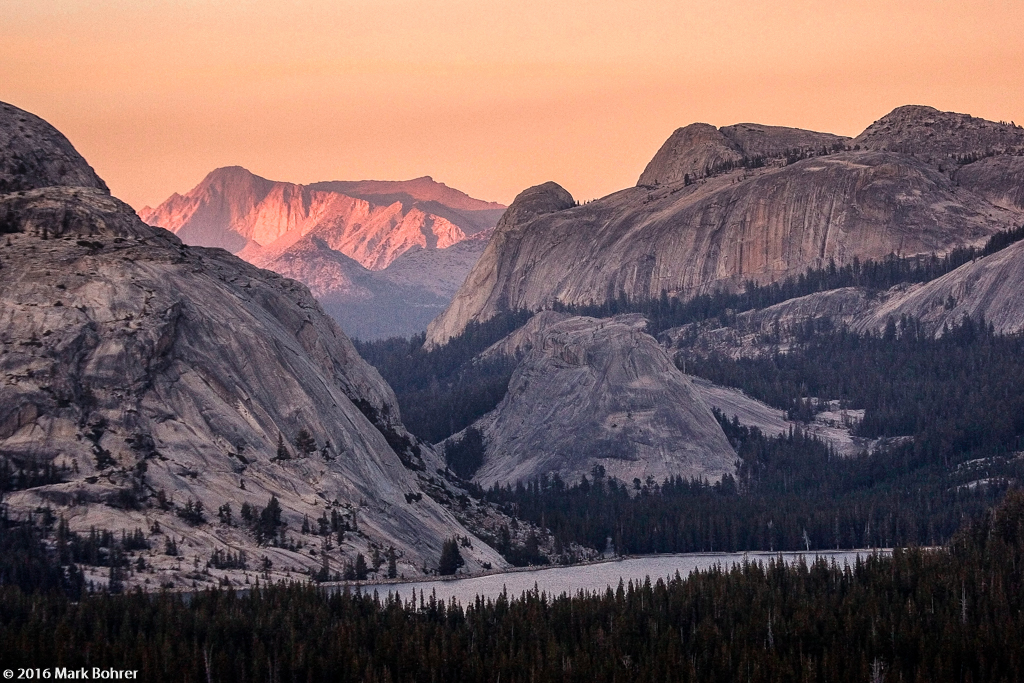
Tenaya Lake, Yosemite National Park, California
How do you use simple science to predict where you’ll see sunsets, capture their colors, and find something interesting to put in their light? What photographic techniques do you need with lens and camera?
Moving Through A Party Crowd
There’s a stack of air over your head. It’s behind and in front of you too. But there’s a lot more straight ahead than looking straight up. At noon when the sun’s overhead, light rays move through less of it on the way to your eye, but they don’t follow a straight path. The air stack is like a crowded party, where you bounce off other people on your way to the door.
Like the light rays, your size relative to how big the other folks are determines when or even if you reach the door. (All bets are off if anybody’s had five or six drinks.)
In clear air, most colors of light – most wavelengths – reach your eye. Violet and shorter wavelengths you can’t see are nearer the size of nitrogen and oxygen molecules in air. Those molecules are like crowds of big people between you and the door for violet light. That color can’t get there, and you don’t see a violet sky. Otherwise, you would.
And because your eyes are more sensitive to blue than other colors, that’s how the sky looks at noon.
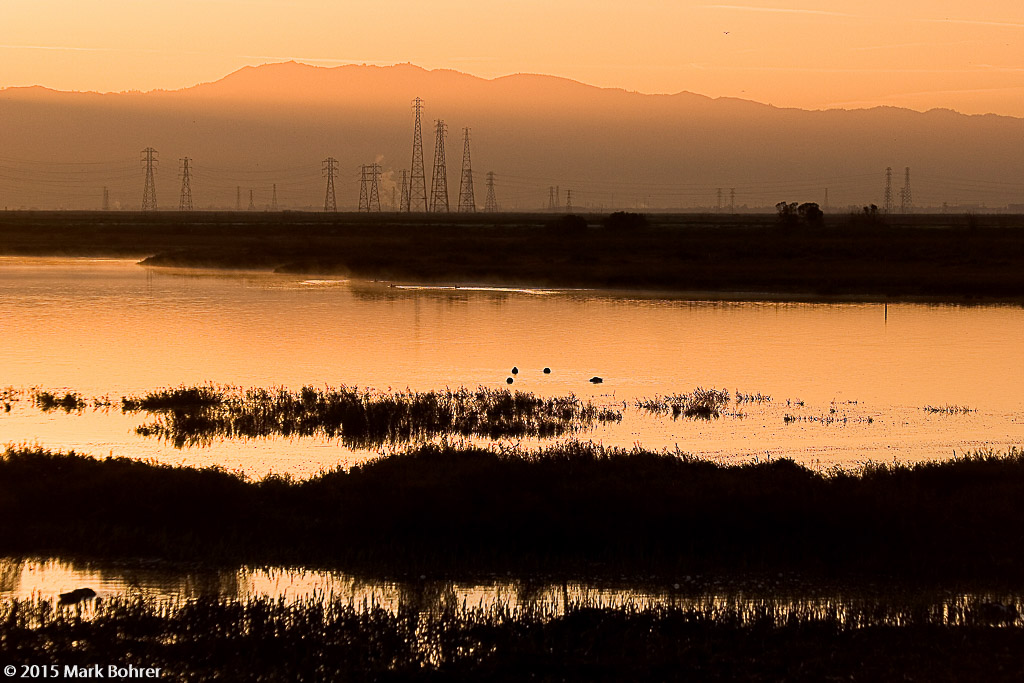
Sunrise, Palo Alto Baylands, California
More Crowded Close To The Horizon
But at sunrise or sunset, low to the horizon, there are a lot more air molecules between your eye and the sun. The shorter violet, blue and green wavelengths get scattered away by too many air molecules, so they don’t reach your eye. Too many big people at the party – you never get to the door. But longer red, orange and some yellow wavelengths are like a football linebacker at the party. Nothing stops them. They reach your eye at sunrise and sunset, especially the reds.
When there’s excessive air pollution during fire season in California or the Pacific Northwest, it’s like a slim marathon runner trying to get through a party crowd of huge linebackers. Pollution particles – smoke and other junk – are much bigger than air molecules, and scatter everything away. You’re left with murky brown or grey sunrises and sunsets. Clear air gives the best colors. Southwestern deserts in the U.S., a heavy storm system, or cold winter temperatures are all good.
Clouds above the horizon act like movie screens for sunset colors. They spread and reflect them, and you may get a sunset display across the whole cloudy sky.
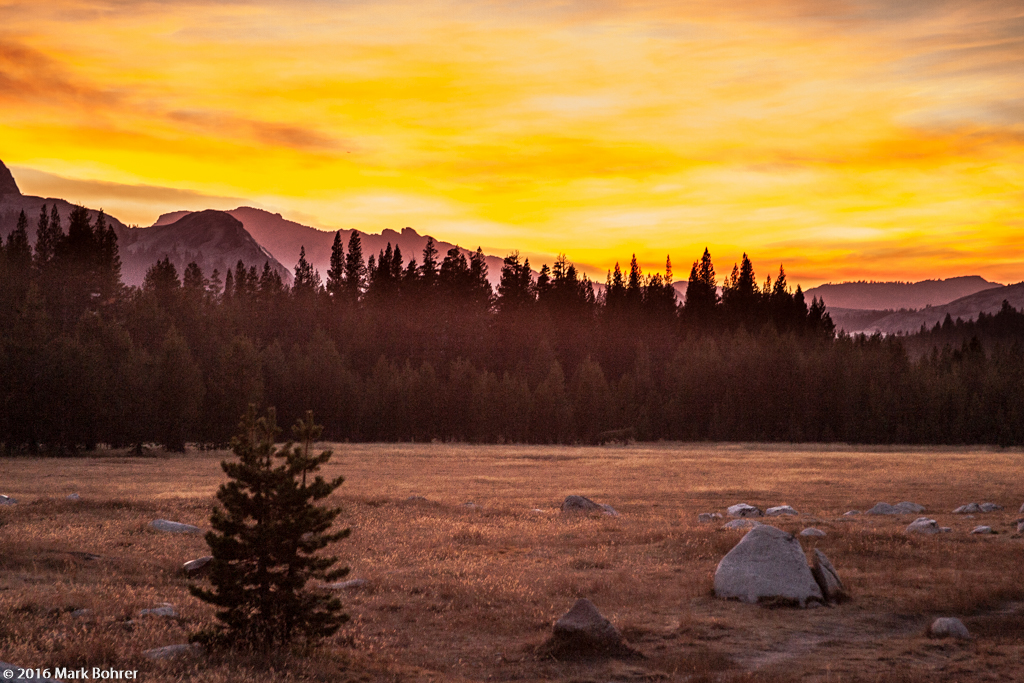
Sunset, Tuolumne Meadows, Yosemite National Park, California
Best Conditions
So your best bets for sunset colors are in pollution-free areas, particularly after a storm system rains or snows all the junk out of the air. Even better if you have high clouds on the horizon – they’ll spread sunset colors across the sky.
Light’s Only Half The Battle
But you need to pair a great subject with those gorgeous sunset colors. Your visual story needs more than the light. You also need to know where the colors will be, and pre-visualize the scene you’ll light with them. If you’ve driven from the California coast to Yosemite, the mountains are a natural for both the background and the nearer subject. Distant mountain silhouettes and craggy rock are great for breaking up a straight horizon line.
A city’s rivers of car headlights are another way to lead a viewer’s eye around the picture to the sunset light on the horizon. I’ve shown the contrast between urban traffic and the much larger sunset sky, or flicks of God’s own paintbrush on a granite mountain landscape, where I’ve half-expected to see Him or Charleton Heston come striding out of the clouds.
An app like the Photographer’s Ephemeris will show you the sun’s path to the horizon on any day of the year and any location, so you know where it will go in advance. I usually observe for a few nights prior to shooting to know where it will be, and what the sky will look like.
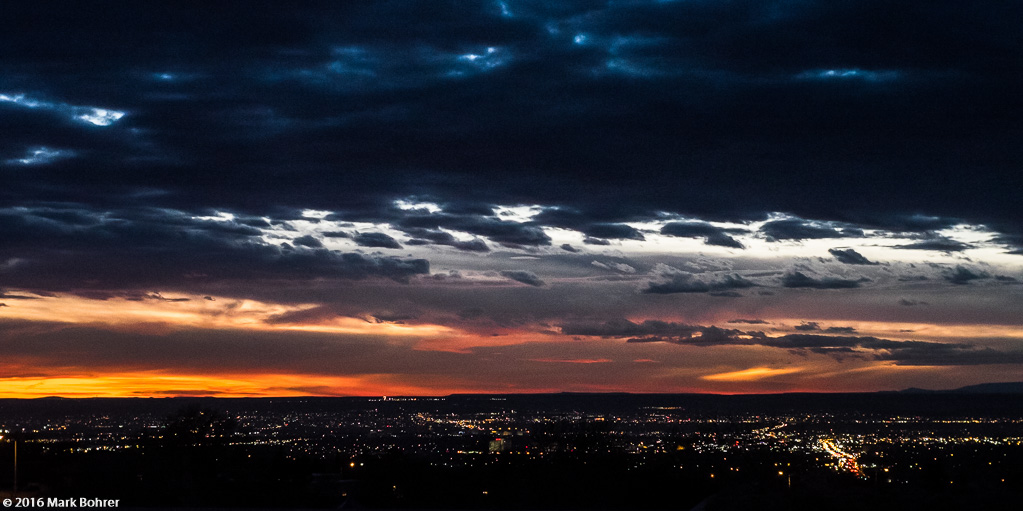
Albuquerque after hours – New Mexico
It Needs To Look Like Evening
Now, some technical stuff – your camera has a thing for 18% grey. Its meter will always make your pictures look like full daylight if you let it. But your eye sees less light at sunset and sunrise, so you need to set your camera to see less light too. I underexpose sunset scenes by – 1/3 to -1 full stop. I mostly shoot using aperture priority – set a lens aperture to control my depth of field, pick a high-enough ISO for a shutter speed I can hand-hold without shaking, and let the camera choose the needed speed. Then I use the camera’s exposure compensation to set -1/3 to -1 stops under.
Yes, you can use a tripod to hold the camera steady at slower speeds. But most of the time I find myself with just the lens and camera, so I use high ISOs for higher shutter speeds – nothing slower than 1/30 second with a mirrorless camera or 1/125 with a mirror-slapping dSLR.
Viewfinders And Post-Processing
I also use cameras with viewfinders. This gives a more secure three-point stance – my two hands and my forehead – to hold the camera steady. If there’s important foreground detail I might want to recover later, I’ll focus on it or about 15-20 feet away, and set a lens aperture that gives me good depth of field to infinity and beyond. I shoot in RAW format to give me enough contrast range – 64 times what I would get in JPEG – to recover shadow detail later in Lightroom.
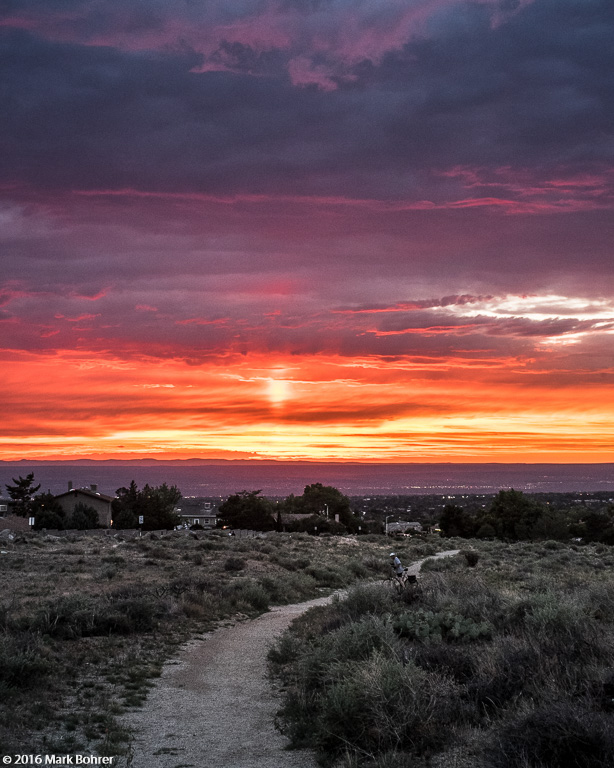
Sandia foothills trail view – clearing storm at sunset – Albuquerque, New Mexico
Recent cameras give you sufficiently-low digital noise at ISO 3200-6400 to yield usable pictures. If I see excessive noise, I use Lightroom’s luminance noise reduction to control it. For older cameras like Leica’s M8, I may also use color noise reduction to reduce streaking or color speckling. The slight blurring it creates shouldn’t noticeably affect cloud textures and colors if you avoid excessive amounts. You can also use Lightroom’s graduated filter tool to confine noise reduction to areas that need it.
A final thought – the best colors aren’t always on the sunset or sunrise horizon. Remember to look behind you for great opposite-horizon light on interesting subjects.
References
Corfidi, Stephen, The Colors of Sunset and Twilight
Accessed from http://www.spc.noaa.gov/publications/corfidi/sunset/
No author given, Curiosities: What determines the colors of the sky at sunrise and sunset?
Accessed from http://news.wisc.edu/curiosities-what-determines-the-colors-of-the-sky-at-sunrise-and-sunset
|






Recent Comments